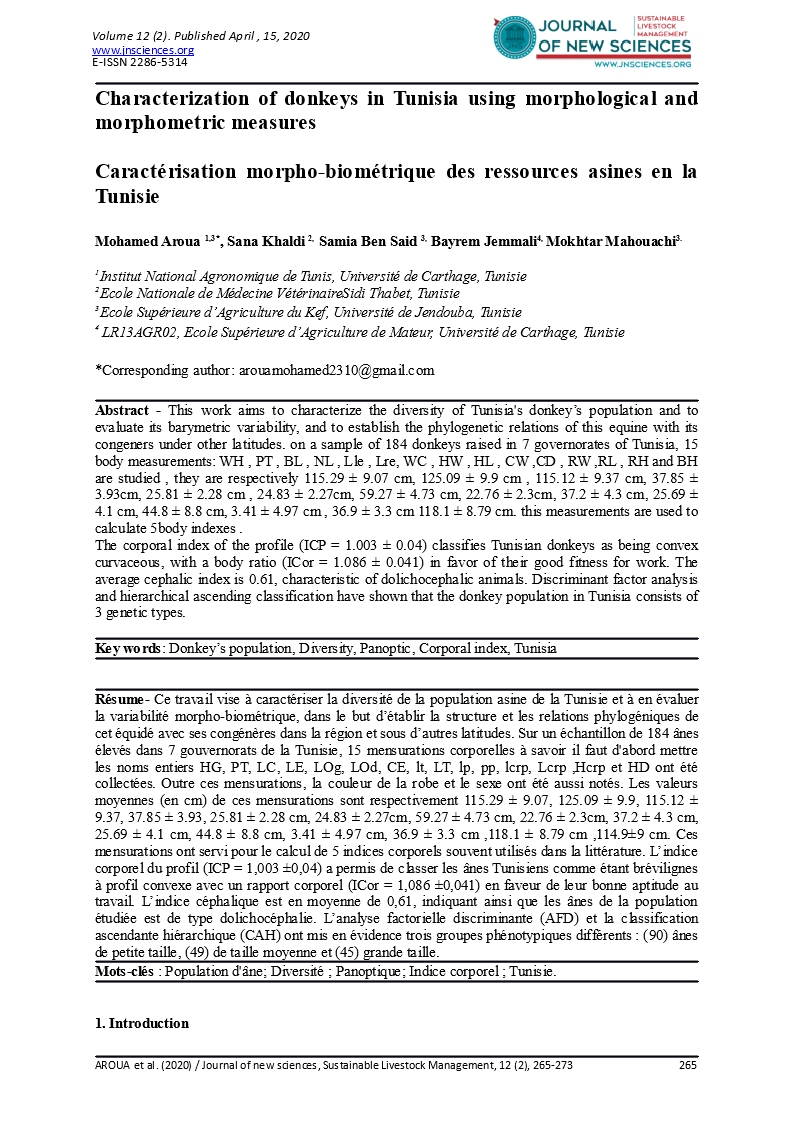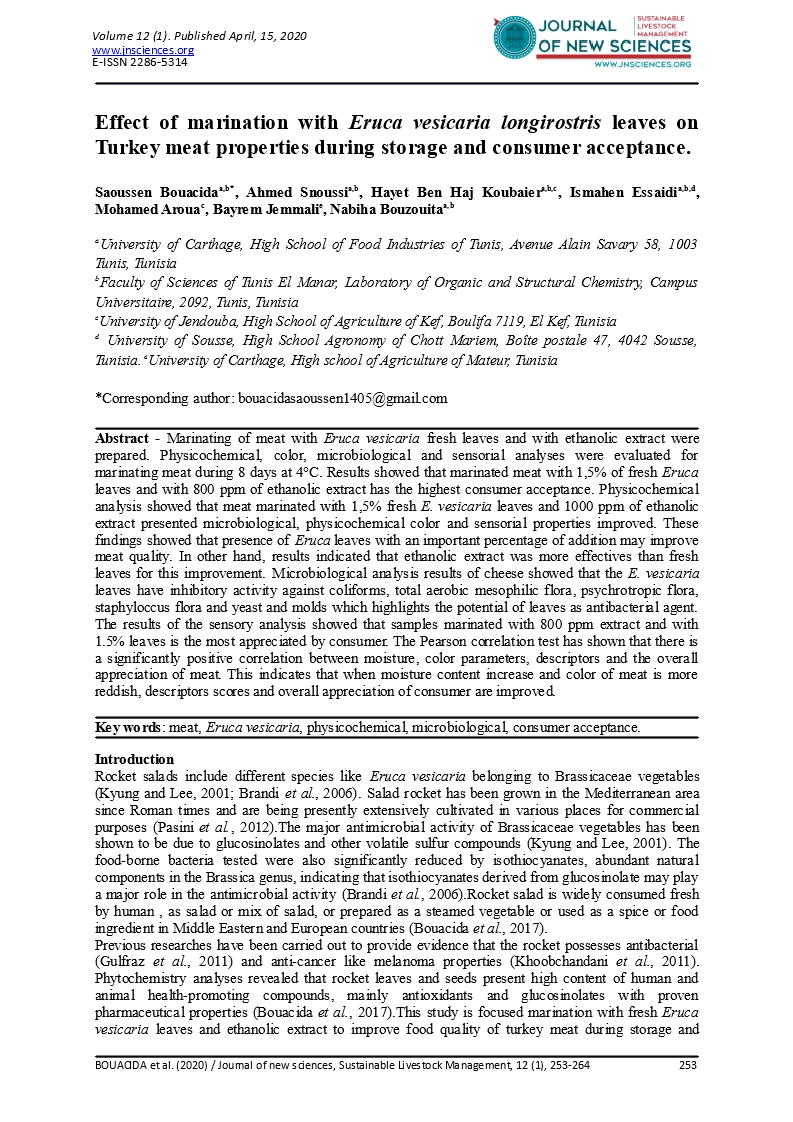- Category: Volume 12
- Hits: 4902
Characterization of donkeys in Tunisia using morphological and morphometric measures

Caractérisation morpho-biométrique des ressources asines en la Tunisie
Mohamed Aroua 1,3
Sana Khaldi 2
Samia Ben Said 3
Bayrem Jemmali4
Mokhtar Mahouachi3.
1Institut National Agronomique de Tunis, Université de Carthage, Tunisie
2Ecole Nationale de Médecine VétérinaireSidi Thabet, Tunisie
3Ecole Supérieure d’Agriculture du Kef, Université de Jendouba, Tunisie
4 LR13AGR02, Ecole Supérieure d’Agriculture de Mateur, Université de Carthage, Tunisie
Abstract - This work aims to characterize the diversity of Tunisia's donkey’s population and to evaluate its barymetric variability, and to establish the phylogenetic relations of this equine with its congeners under other latitudes. on a sample of 184 donkeys raised in 7 governorates of Tunisia, 15 body measurements: WH , PT , BL , NL , Lle , Lre, WC , HW , HL , CW ,CD , RW ,RL , RH and BH are studied , they are respectively 115.29 ± 9.07 cm, 125.09 ± 9.9 cm , 115.12 ± 9.37 cm, 37.85 ± 3.93cm, 25.81 ± 2.28 cm , 24.83 ± 2.27cm, 59.27 ± 4.73 cm, 22.76 ± 2.3cm, 37.2 ± 4.3 cm, 25.69 ± 4.1 cm, 44.8 ± 8.8 cm, 3.41 ± 4.97 cm , 36.9 ± 3.3 cm 118.1 ± 8.79 cm. this measurements are used to calculate 5body indexes. The corporal index of the profile (ICP = 1.003 ± 0.04) classifies Tunisian donkeys as being convex curvaceous, with a body ratio (ICor = 1.086 ± 0.041) in favor of their good fitness for work. The average cephalic index is 0.61, characteristic of dolichocephalic animals. Discriminant factor analysis and hierarchical ascending classification have shown that the donkey population in Tunisia consists of 3 genetic types.
Key words: Donkey’s population, Diversity, Panoptic, Corporal index, Tunisia

